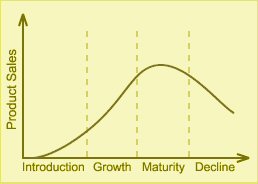To recap, the 5c's of Marketing are Customers, Company, Competitors, Collaborators and Climate
The 5 C's of Marketing and Strategic Marketing Basics
Once you know the marketing mix, goals, and targets of your marketing effort, the next step is to develop the marketing strategy. A good guideline to make the right decisions, while constructing a marketing plan and strategy, are the 5 C’s:
- Customers – Determine what needs from which clients you’re trying to satisfy. A few areas to research would be the market segments, benefits the customer wants, if the value of the benefits outweigh the costs, frequency of purchases, quantity of purchases, retail channel, and needs based on trends over time.
- Company – Determine if your company can meet those customer needs. For example, does your company have the right product line and/or technical expertise? A good tool to help determine your company’s strengths and weaknesses is “SWOT” analysis. This stands for Strengths such as innovative products, expertise, great processes and procedures, Weaknesses such as the lack of knowledgeable technical support or poor product quality, Opportunities such as a new international market or a market led by a weak competitor, and Threats such as a new competitor or price war. This is a very good tool to analyze the internal strengths and weaknesses, and the external opportunities and threats.
- Competitors – Determine who competes with your company in meeting the customer’s needs. Is it an active competitor or a potential threat? What are their products exactly? What are their strengths and weaknesses?
- Collaborators – Determine if there is any outside source that can help the company such as distributors, suppliers, etc.
- Climate (or Context) – Determine if there are any limitations due to Political issues such as legal problems, trade regulations, taxation, and labor laws, Economic concerns such as growth rate, labor costs, and business cycle stage, Social impacts such as demographics, education, and culture, and Technological developments such as the impact on cost structures. This is also known as “PEST” analysis. These forces can be dramatic and difficult to predict.
Strategic marketing decisions are mostly based on price and quality. A product can be of exceptional quality at a high price like a Rolls Royce, or of a lower quality but lower price like a Hyundai. Economically, it is not expected that the price of a Rolls Royce will be the same as that of a Hyundai.
A strategic decision companies face is to choose whether they will compete on price or quality. Marketing would then focus its efforts on the results of that decision. For example, if the company were a thrifty clothing store, the message would focus on the low price for its everyday goods. If the company were a Beverly Hills clothing store, the message would focus on the elite quality and design with the price being of little concern.
Companies also compete on service such as post-sales support and warranties. They can also compete based on the novelty, design, prestige, ease of use, and technical sophistication of the product. Product differentiation, like improved performance, improved appearance, and improved image, is a good way to make a product different from others like it. Overall, the essential goal of a marketing strategy is to have a competitive advantage and to get that word out to the marketplace.
A market-driven company looks for and listens to customers to learn why and how customers use their products. They look at trends in the marketplace in technology, pricing, and packaging, not to mention watching what their competitors are doing.
Marketers also try to understand who will likely influence the decision-making process for their target market. They will not only try to design their promotions around the buyer, but also all those who may also be involved. For example, the father will make the decision on which vacation package he will buy, however, he will also be influenced on other factors such as his wife and children. Here are the 5 decision-making steps:
- The initiator, who might be the child who wants to go to Disneyland.
- The influencer, who might be a travel agent.
- The decider, who might be the parent’s.
- The buyer, who might be the father who used his credit card.
- The user, who reaps the benefits, which in this case was the child who was the initiator.
The buying process consists of:
- Problem recognition, which could be a simple need, to a complex want.
- Information search, which is how they will find the need or want.
- Evaluation of alternatives, which is when they compare with other products.
- Purchase decision, which is made after all alternatives have been evaluated.
- Post-purchase behavior, which is whether they were satisfied, or have a case of buyer’s remorse.
Whenever a new product is released, one way to look at how the new product will be adopted by buyers is the “Product Adoption Curve.” It states there will be various categories of buyers in a predictable order. Most buyers wait to buy something new until the more innovative buyers adopt the product first.








